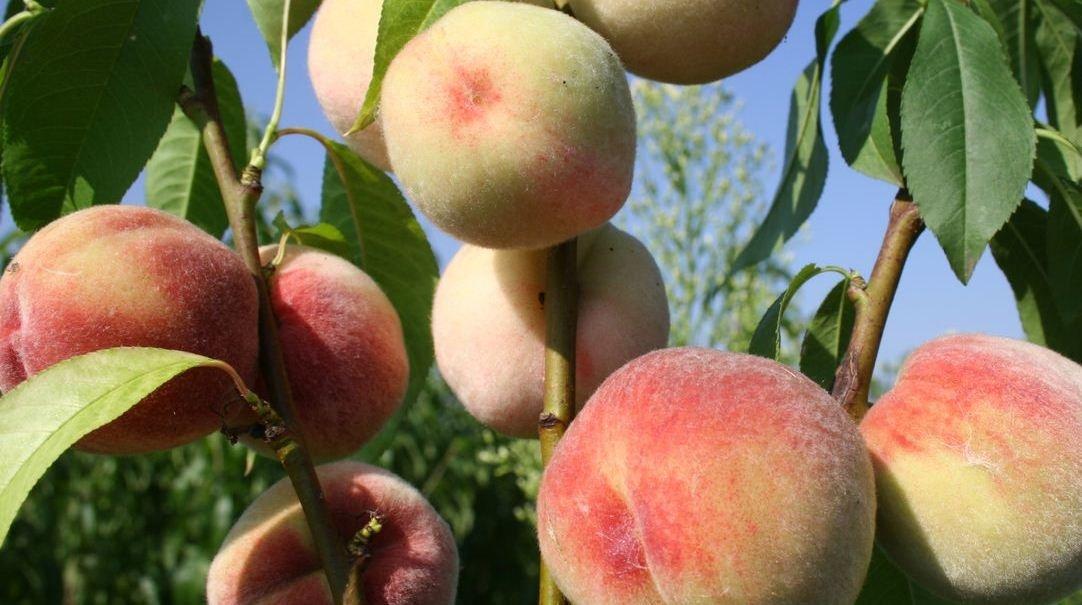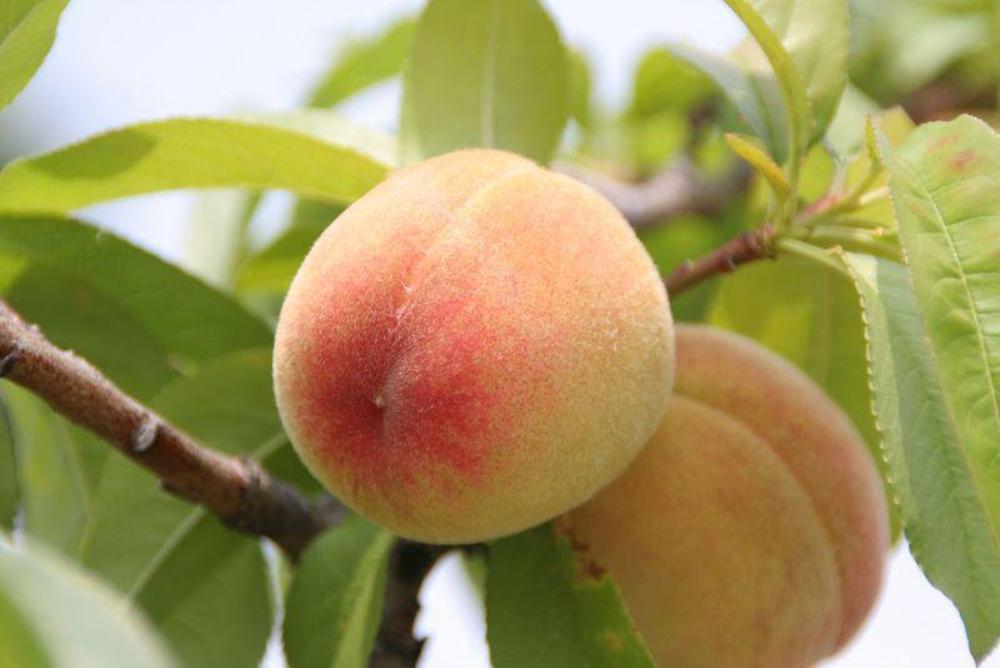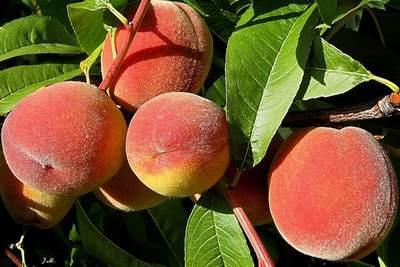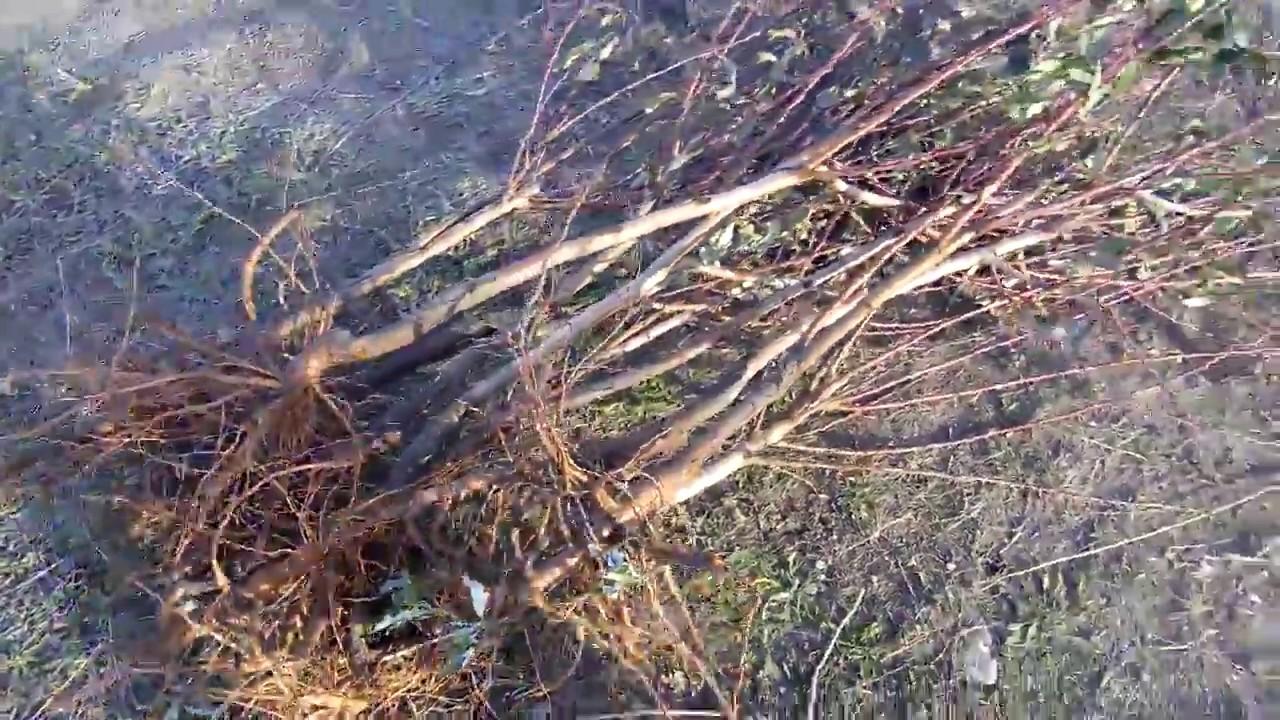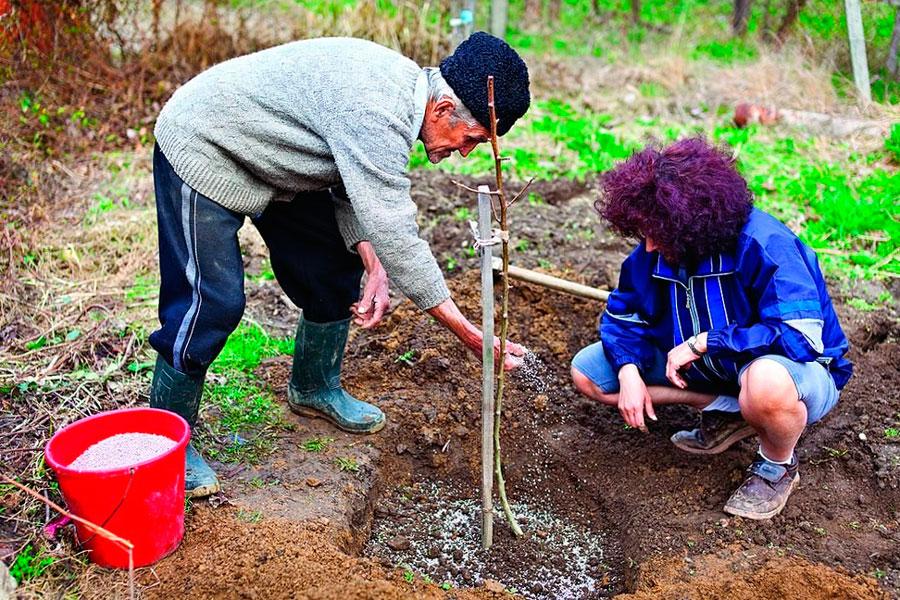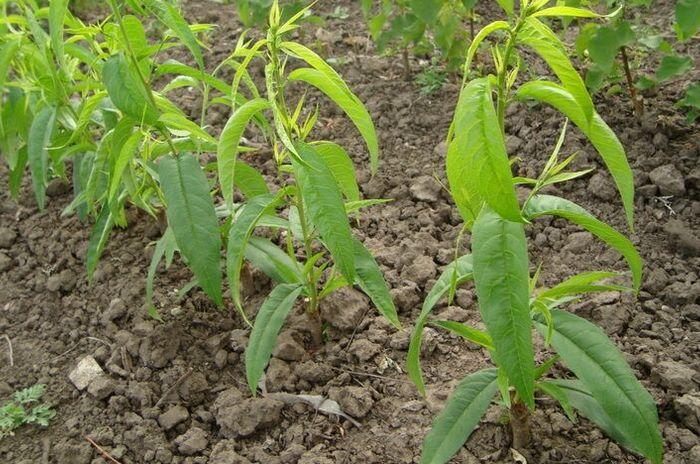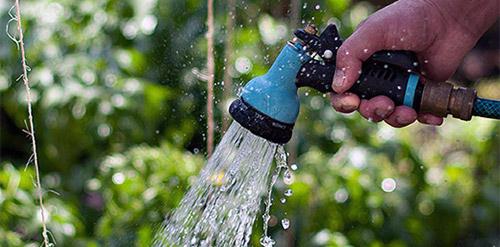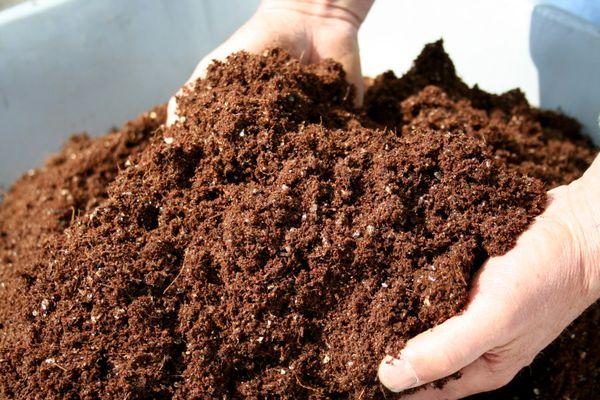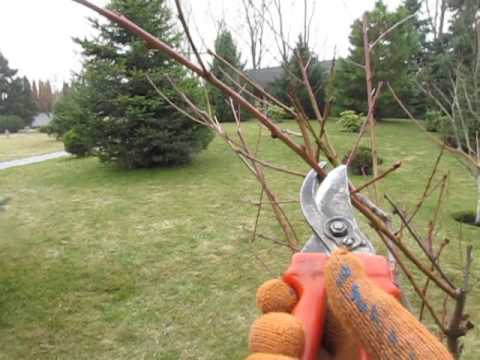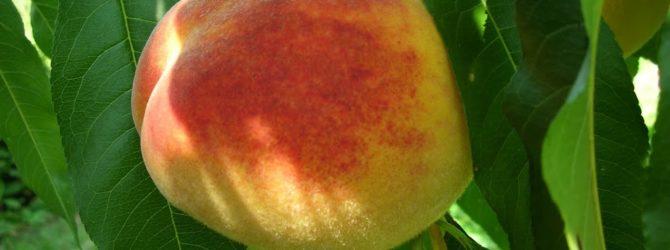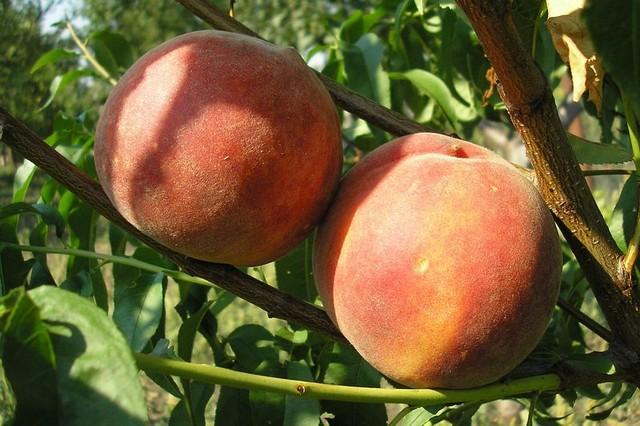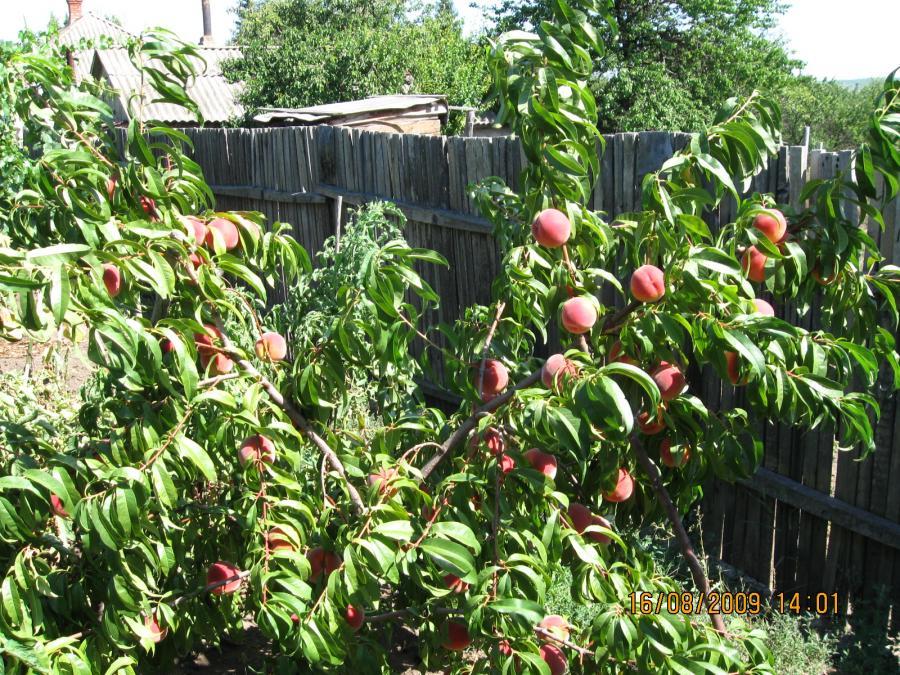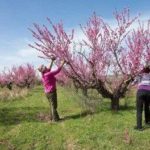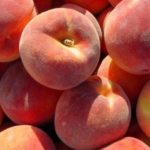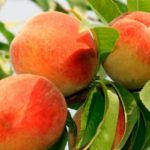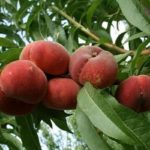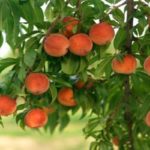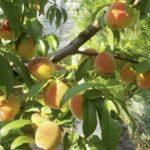The peach tree is originally a southern, heat-loving plant. The cultivation of delicate sweet fruits in the regions of Russia became possible thanks to Soviet breeders. Through the efforts of scientists, a variety of early Kyiv peach has been developed, which tolerates cold winters well and quickly adapts to different climatic conditions.
- Description and characteristics of the Kyiv early variety
- Pros and cons of peach
- Specifics of growing a plant
- Where is the best place to plant?
- Selection of planting material
- How to plant a peach?
- Pollinators
- Subtleties of crop care
- Watering
- Top dressing
- Trimming
- Is it necessary to prepare early Kiev peach for wintering?
- Disease Control
- Pest protection
- Harvesting and marketing
Description and characteristics of the Kyiv early variety
The tree grows up to 5 meters high. By the third year, a rounded crown with spreading branches is formed. At the same time, the crop begins to bear fruit. The leaves are narrow, elongated with a finely toothed border. Peach blossoms begin in April-May and last until the leaves bloom. When describing the early Kyiv peach variety, one cannot fail to mention its similarity to sakura in the beauty of its pink inflorescences.
The rounded fruits weighing 80–100 g of the tree are yellow with blush and velvety skin. Ripen by mid-summer. The white pulp is sweet, juicy with sourness and a delicate aroma. Unlike other varieties, it does not turn red closer to the hard-to-separate pointed stone, mottled with grooves.
Peach delights with delicious, refreshing fruits in the early stages, despite frosty winters, due to its ability to quickly recover.
Pros and cons of peach
The demand for early Kyiv peach is explained by the predominance of the variety’s advantages over its disadvantages. Gardeners include the following advantages of the culture:
- early fruit ripening;
- yield - up to 60 kg per tree every year;
- recognized taste qualities of fruits;
- high resistance to diseases affecting peach trees;
- fast growth rates;
- adaptation to climatic conditions, frost resistance;
- the use of fruits in dietology, cooking, cosmetology due to the vitamins and minerals they contain;
- fruits normalize blood pH;
- possibility of transportation.
Disadvantages of culture:
- requirement for moderate soil moisture;
- difficult to separate seeds;
- tendency to curl the crown.
The fruits of this variety are among the most delicious. With adequate care, the tree bears fruit for up to 15 years.
Specifics of growing a plant
The choice of location, seedling, planting and other agrotechnical measures when growing early Kyiv peach have their own characteristics.
Where is the best place to plant?
Fruit trees love elevated areas without stagnant water or cold winds. For flowering and ovary formation, sufficient sunlight is required. Experienced gardeners exclude the cultivation of other plants closer than three meters from the early Kyiv peach, and do not allow shading by buildings or fences.
The soil for the crop is prepared as nutritious, slightly acidic with good drainage. Planting in swampy soil or near groundwater lying closer than 1.5 from the surface is unacceptable. Due to the risk of infection with verticillium, areas where melons, tomatoes, and strawberries previously grew are not suitable for use.
The timing of peach planting depends on the climate of a particular region. In the southern regions, the recommended time is autumn. Where winters are cold, the seedling needs time to take root and adapt. In central Russia, the optimal time is spring, after the snow cover melts and the ground dries out.
Selection of planting material
Early Kyiv peach seedlings are purchased from specialized nurseries. The trees are first inspected for integrity, absence of deformations and damage to the trunk and branches. Find out from the manufacturer how adapted the variety is to local conditions.
Pay attention to the development of the root system. The normal length of roots for a two-year-old seedling is at least 30 cm. An even, straight trunk should not have side branches.
The color of a torn piece of bark determines whether a seedling is alive or dried. The underside of the bark is green, which means the plant is suitable for growing. If the color is brown, the tree is dead.
How to plant a peach?
It is recommended to dig a hole for the crop 60 cm deep and wide in the fall to allow the soil to shrink. Otherwise, the seedling will be pulled to a greater depth than planned planting.
The fertile layer of soil in the planting pit is separated from the infertile one, thrown into different places. A bucket of peat or humus, 200 g of ash or 200 g of complex mineral fertilizers are added to the arable layer. After laying the drainage at the bottom, fertilized soil is poured on top. Infertile soil is scattered around the site or taken outside its boundaries.
Peach planting algorithm:
- A supporting stake is dug in the center of the planting recess.
- A mound is formed in the hole, on which the roots of the seedling are straightened.
- Cover the tree with soil carefully, shaking it periodically so that no voids appear between the roots. The root collar can be deepened no more than 5 cm. The grafting site should be located above the ground.
- The support stake is tied to the trunk of the peach.
- The seedling is watered.
- When the soil subsides, more soil is added, a tree trunk is formed, and mulched with sawdust and bark.
Pollinators
The variety is self-pollinating. To maximize the yield, other varieties are planted nearby that bloom at the same time as Kyiv Early - Redhaven, Velvety, Greensboro. The optimal distance between fruit trees is 3–4 m. If planted closer to each other, there will be a lack of light and minerals. With rare plantings, the intensity of pollination decreases.
Subtleties of crop care
The key to high yields and excellent taste of tender, juicy fruits lies not only in choosing a healthy seedling and planting. Proper care of early Kyiv peach affects the growth of the crop and fully reveals its varietal characteristics.
Watering
An adult tree needs 5 waterings per season.The soil is moistened for the first time through a groove in the trunk circle 10 days before flowering. Then - as needed. The early Kiev peach especially feels the need for water during drought. You can water the crop abundantly no earlier than the seeds in the fruits become hard. Otherwise, the risk of peel cracking increases.
The ground under young trees is moistened in the summer in the absence of rain every 2 weeks by pouring a bucket of water under them.
Top dressing
In the spring, nitrogen-containing fertilizers are applied to the early Kiev peach - nitroammophoska, urea. In early summer, potassium preparations are used to form the ovary and increase the sugar content of the fruit.
If the soil in the planting hole is fertilized according to the rules, then the peach is fed with liquid organic matter in the summer, starting from the third year. Stop application 2 weeks before harvest.
One of the best organic fertilizers for fruit trees is chicken manure. Organic matter is combined in equal parts with water and kept warm for 3 days. Before use, the infusion is diluted with water in a ratio of 1:10. The optimal volume for feeding is 1 liter per 2 square meters. m of land.
Complex mineral fertilizers are added to organic fertilizers in the first half of summer. In the fall, when digging the ground, humus, superphosphate, and ash are added.
Trimming
Pruning of early Kyiv peach is carried out for sanitary purposes, to form the crown and for rejuvenation, when old branches are replaced with young ones. Sanitary pruning of the crop is carried out in spring and autumn. Remove diseased, deformed branches.
Formative pruning is carried out exclusively in spring, when the average daily air temperature reaches 5 °C.
When forming the skeleton of a tree, in the first year the conductor is shortened at a height of half a meter. One skeletal branch is left from the shoots of the lower tier.Higher by 5 kidneys on the opposite side is the second one. They are cut to 20 cm. In the second year, two skeletal branches of the second tier are formed, located above last year's ones. Trim the trunk at the level of the fourth branch. The branches of the lower tier are cut by 1/3, and the second tier is 10 cm smaller than the first.
In the third spring, branches of the second order are laid. At a distance of at least 50 cm from the trunk, several shoots of the skeletal branches of the lower row are selected and shortened to 40 cm. In the fourth year, the same procedure is repeated, but with the second tier. Early Kiev peach annually needs to free the trunk from shoots and shorten the ends of the skeletal branches.
Is it necessary to prepare early Kiev peach for wintering?
Preparing crops for winter includes the following activities:
- abundant autumn watering;
- mulching the tree trunk circle with sawdust, peat, dry grass;
- whitewashing of the trunk and lower branches.
If the peach is formed in the form of a bush, the branches are tied, bent to the ground, and covered with dry leaves. A frame is built around the seedling, on which agrofibre and spunbond are fixed. In mature trees, the trunk is tied with burlap, spruce branches or cardboard with a layer of dry grass.
Disease Control
The main fungal diseases of the crop include:
- Curly. All organs of the early Kyiv peach are affected, but most of all the foliage. First, swellings appear on the leaf blades and the color changes from green to red and brown. Next, the leaves curl and fall off. To treat the crop, Bordeaux mixture is used at 3% before buds open, 2% during blossoming and 1% during growing shoots.
- Clusterosporiasis.Peach leaves develop small red spots that dry out, creating holes. The disease spreads to the bark of the trunk and branches, forming ulcers. Over time, “warts” appear on the fruits. Before buds open, during budding and after flowering, the crop is treated with copper oxychloride (3.5 g per liter of water).
- Fruit rot. Affects fruits with mold. Sick specimens are removed so as not to infect neighboring ones. The tree is sprayed with safe fungicides - Fitolavin, Planriz, Gamair.
- Powdery mildew. A gray fungal coating forms on the leaves, branches, and fruits, reducing frost resistance and crop yield. Treatment consists of using Fundazol before flowering and Topas after it.
To prevent fungal diseases of early Kyiv peach, sanitary pruning and removal of foliage, fruits and branches under trees from the ground are recommended.
Pest protection
Common insect pests that attack crops include:
- fruit moth;
- weevils;
- aphids;
- eastern codling moth.
Moth caterpillars that destroy shoots are fought with Nitrophen, Karbofos, Iskra. To get rid of the weevil that eats all parts of the early Kyiv peach, double-sided tape is glued to the trunk. When a lot of insects have collected on the catching belt, the device is removed and disposed of. Whitewashing the trunk and branches, digging up the soil in the tree trunk, treating the crop with copper sulfate, Fitoverm, and Metaphos helps.
Aphids, which suck juices and lead to drying of leaves, buds, and young branches, do not like spraying with infusion of garlic, onion peels and dandelions. Among the chemicals used are Nitrofen, Dursban, Decis.
Pink caterpillars of the Eastern codling moth destroy shoots and peach fruits.A solution of Chlorophos (20 g per 10 l of water), Karbofos (60 g per 10 l of water) is suitable for destroying the pest.
Harvesting and marketing
When picking fruits, it is important not to miss the technical ripeness period if the fruits are intended for sale or culinary processing. For fresh consumption, peaches should not be allowed to become overripe, as the taste and consistency of the pulp will change, not for the better. The fruits lose their juiciness and become dry.
The fruits are used to make compotes, jams, marmalades, and purees. Select fruits without damage and wrinkled sides, with a dense peel. Such specimens contain more vitamins, micro and macroelements.
Fresh peaches can be stored for no more than a week in the refrigerator. The correct choice of seedling, planting and further care of the early Kyiv peach allows Russian gardeners to enjoy the delicate, aromatic fruits starting in mid-July.

